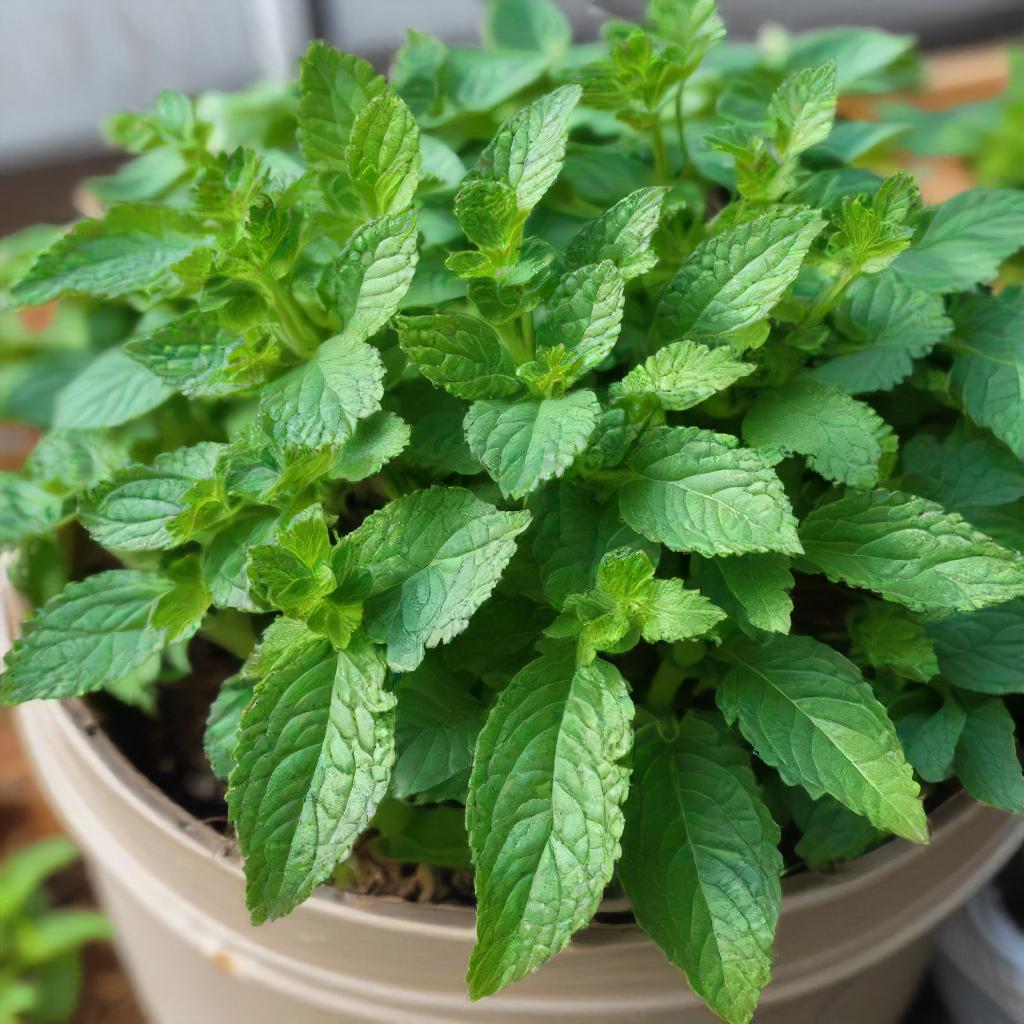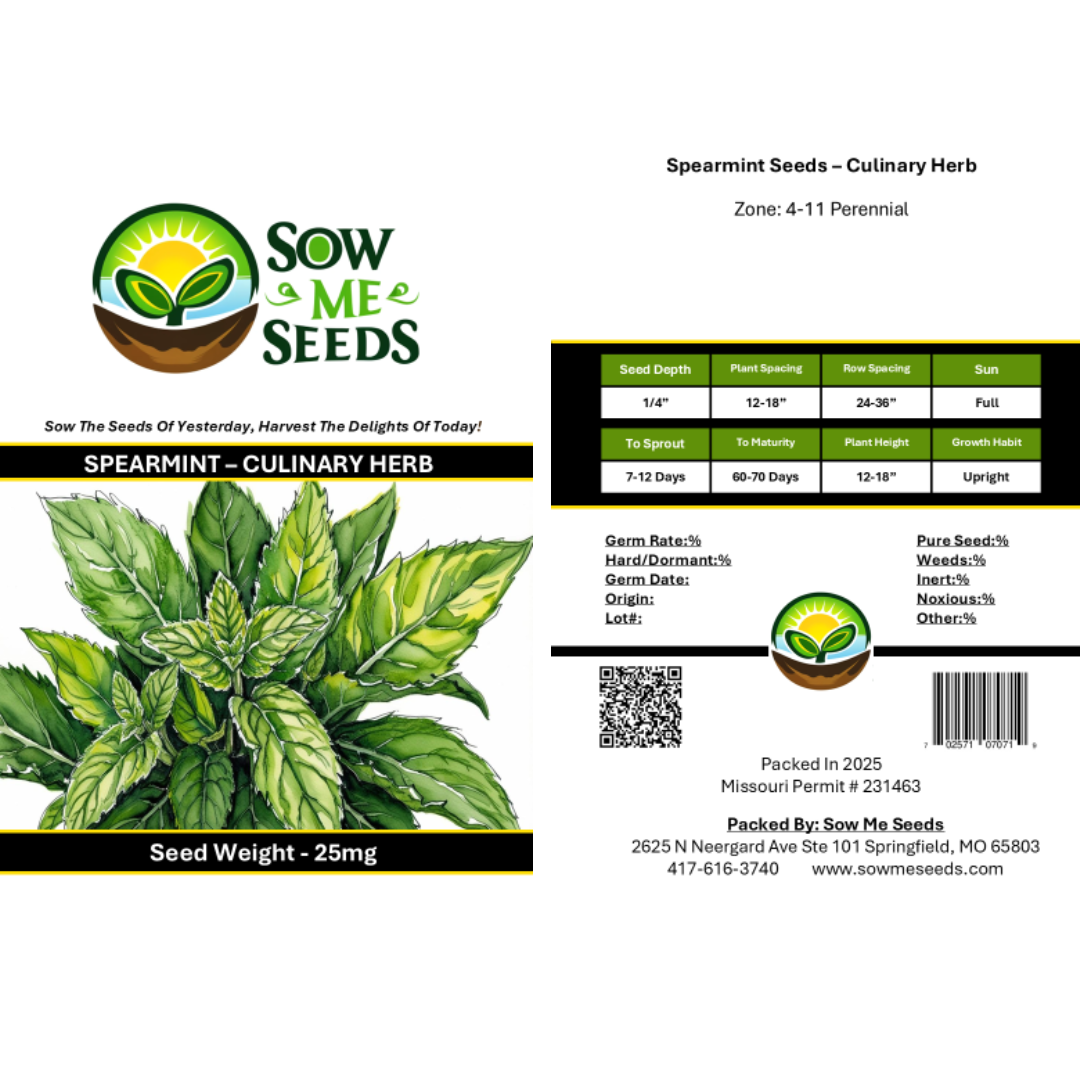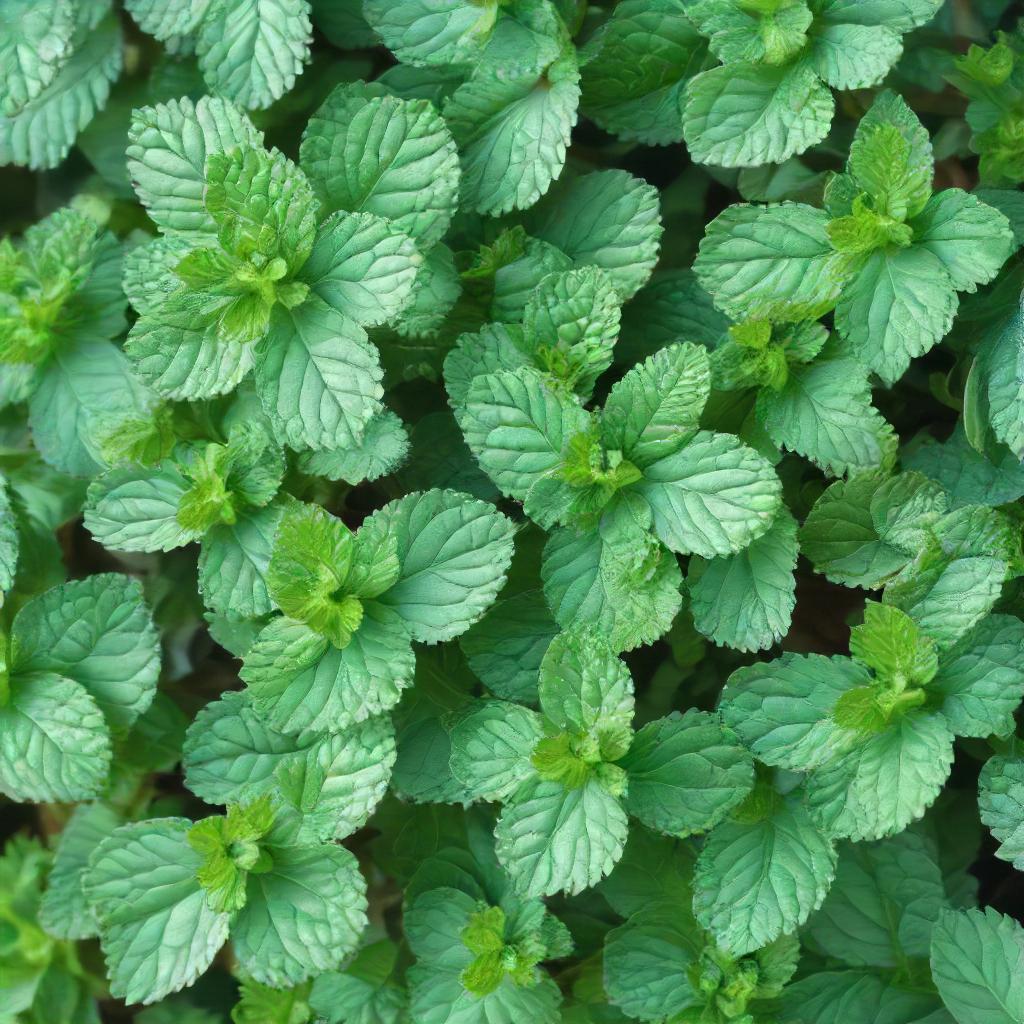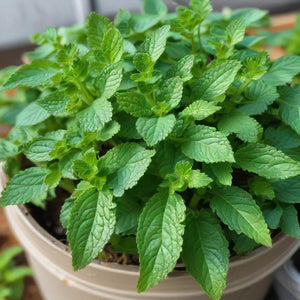- Hardiness Zone: 4-11, Perennial
Seed Depth: Surface sow, press lightly into soil
Seed Spacing: 12–18 inches
Row Spacing: 18–24 inches
Sunlight: Full sun to partial shade
Days to Sprout: 7–14 days
Days to Maturity: 60–90 days
Growth Habit: Spreading perennial
Sunlight: Thrives in full sun but tolerates partial shade, especially in hot climates.
Soil Type: Prefers moist, well-drained soil with a pH of 6.0–7.0. Adding compost improves fertility and moisture retention.
When to Plant: Start seeds indoors 6–8 weeks before the last frost or sow directly outdoors after the danger of frost has passed.
Direct Sowing: Sprinkle seeds on the soil surface and press lightly. Spearmint seeds need light to germinate.
Indoor Sowing: Surface sow seeds in seed trays and keep moist. Transplant seedlings when they are 2–4 inches tall.
Succession Planting: Not typically needed; spearmint is a vigorous perennial that regrows each year.
Watering: Keep soil consistently moist but not waterlogged. Spearmint prefers damp conditions.
Fertilizing: Apply a light layer of compost or a balanced fertilizer in spring to encourage new growth. Avoid excessive fertilization to prevent loss of flavor.
Pruning: Trim plants regularly to promote bushy growth and prevent spreading beyond desired areas.
Pest and Disease Control: Generally pest-resistant but monitor for aphids and rust. Maintain good airflow to reduce the risk of fungal diseases.
When to Harvest: Harvest leaves once plants are established and at least 6 inches tall, typically 60–90 days after planting.
How to Harvest: Snip sprigs with scissors or gently strip leaves from stems. For the best flavor, harvest in the morning before the sun intensifies.
Seed Collection: Allow flowers to dry on the plant and collect seeds from spent blooms.
Storing Seeds: Store seeds in an airtight container in a cool, dry place.
Why You’ll Love It
Fragrant and Flavorful: Produces that cool, classic mint flavor loved in teas, sauces, salads, and desserts.
Perennial Favorite: Comes back each year in most climates — just plant once and enjoy long-term harvests.
Pollinator-Friendly: Spearmint blooms attract bees and beneficial insects to your garden.
Container Ready: Grows well in pots to keep its spreading roots contained and controlled.
Plant Characteristics
Height: 18–30 inches
Growth Habit: Spreading, vigorous perennial with square stems and toothed green leaves
Leaf Type: Oval, serrated leaves with a bright green color and strong mint scent
Days to Maturity: 60–75 days
Hardiness: Hardy perennial in zones 4–9
Flavor and Culinary Uses
Flavor: Mild, sweet, and cooling without the sharp menthol intensity of peppermint
Culinary Uses: Excellent for herbal teas, jellies, mojitos, tabbouleh, yogurt sauces, fruit salads, and garnishes
Companion Planting Tips
Good Companions: Cabbage, tomatoes, carrots, and peas
Avoid Planting Near: Parsley (can compete for space and nutrients)
Bonus Benefit: Helps repel aphids, cabbage moths, and flea beetles when interplanted or grown nearby
Common Issues and Solutions
Spreading Aggressively: Grow in containers or raised beds to prevent mint from taking over your garden
Poor Airflow: Space plants properly and trim back regularly to avoid mildew
Pale Leaves: Can be a sign of nutrient deficiency — feed with compost or organic fertilizer
Seeds Per Packet
| 25mg | Approximately 88 |
| 100mg | Approximately 352 |
Why You’ll Love It
Fragrant and Flavorful: Produces that cool, classic mint flavor loved in teas, sauces, salads, and desserts.
Perennial Favorite: Comes back each year in most climates — just plant once and enjoy long-term harvests.
Pollinator-Friendly: Spearmint blooms attract bees and beneficial insects to your garden.
Container Ready: Grows well in pots to keep its spreading roots contained and controlled.
Plant Characteristics
Height: 18–30 inches
Growth Habit: Spreading, vigorous perennial with square stems and toothed green leaves
Leaf Type: Oval, serrated leaves with a bright green color and strong mint scent
Days to Maturity: 60–75 days
Hardiness: Hardy perennial in zones 4–9
Flavor and Culinary Uses
Flavor: Mild, sweet, and cooling without the sharp menthol intensity of peppermint
Culinary Uses: Excellent for herbal teas, jellies, mojitos, tabbouleh, yogurt sauces, fruit salads, and garnishes
Companion Planting Tips
Good Companions: Cabbage, tomatoes, carrots, and peas
Avoid Planting Near: Parsley (can compete for space and nutrients)
Bonus Benefit: Helps repel aphids, cabbage moths, and flea beetles when interplanted or grown nearby
Common Issues and Solutions
Spreading Aggressively: Grow in containers or raised beds to prevent mint from taking over your garden
Poor Airflow: Space plants properly and trim back regularly to avoid mildew
Pale Leaves: Can be a sign of nutrient deficiency — feed with compost or organic fertilizer
Seeds Per Packet
| 25mg | Approximately 88 |
| 100mg | Approximately 352 |





Share and get 15% off!
Simply share this product on one of the following social networks and you will unlock 15% off!